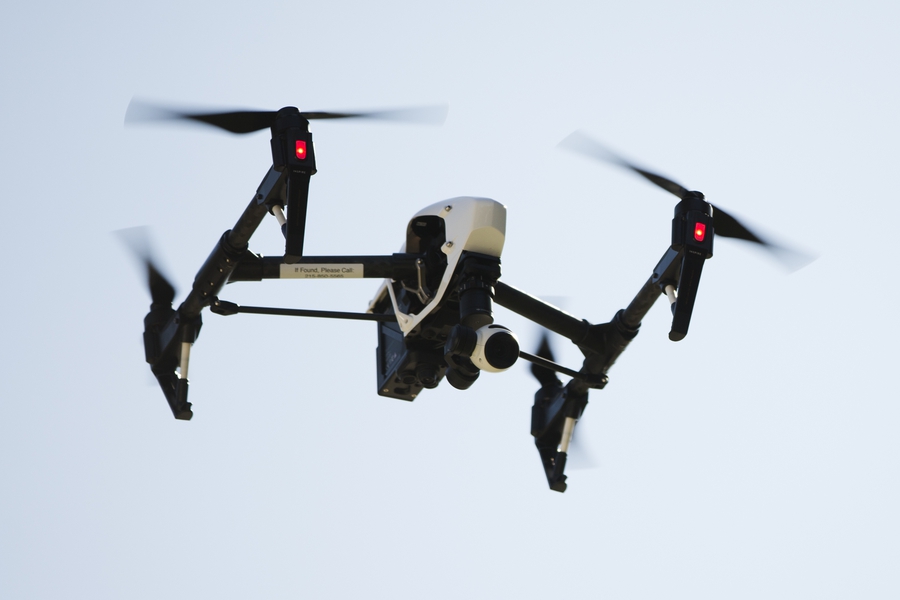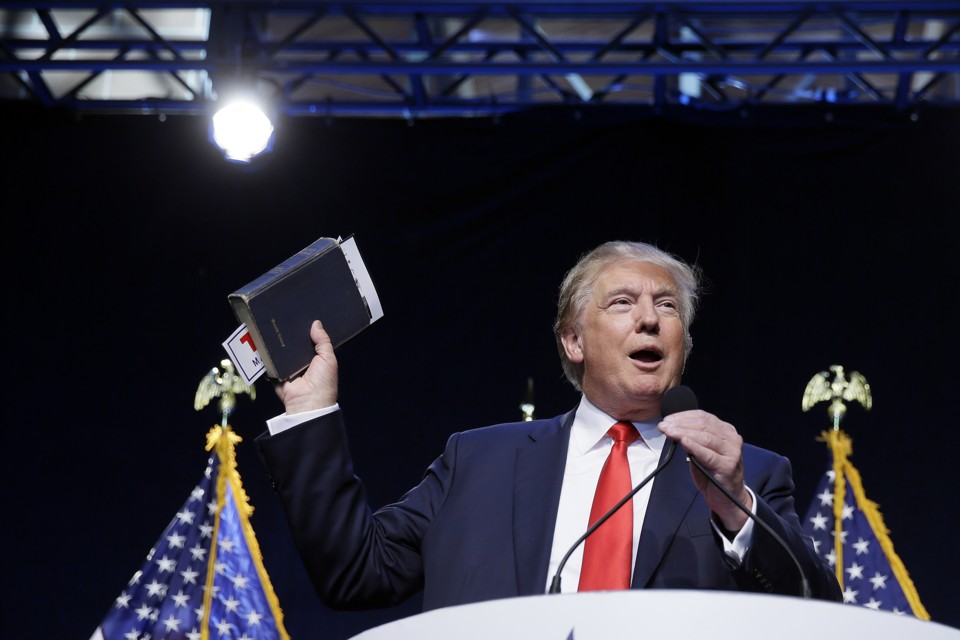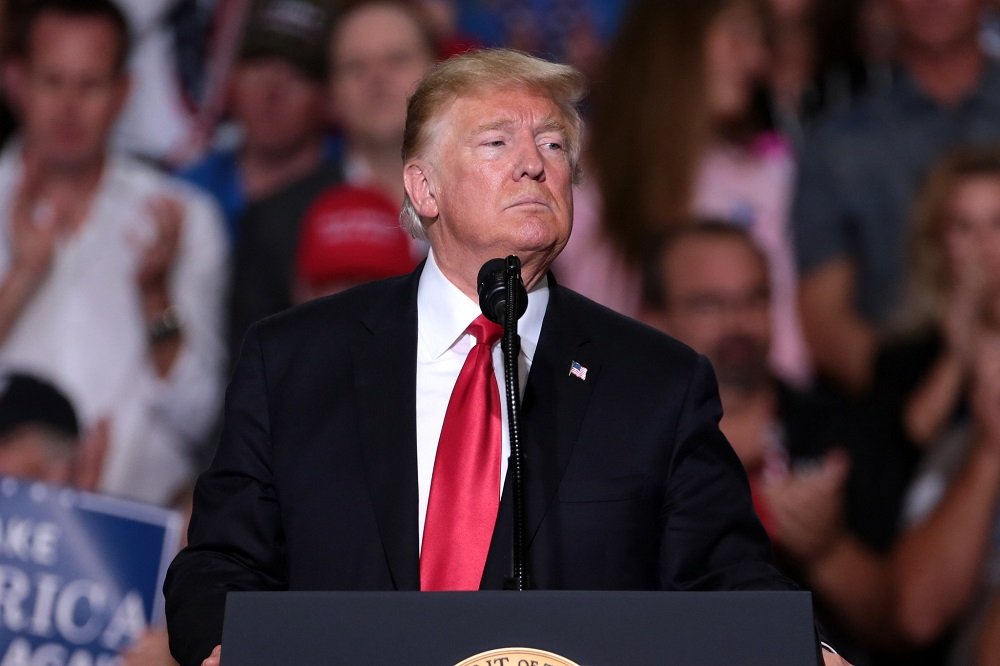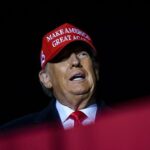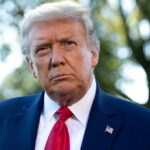SEOUL [REUTERS] – The US has deployed its most powerful weapon THAAD to a facility in South Korea, a move that has led to protests in China, South and North Korea. The Pentagon says the system is critical to defend South Korea and U.S. forces, and that is its sole purpose.
The Terminal High-Altitude Area Defense (THAAD) system is a missile defense system designed to intercept and shoot down short, medium and intermediate-range ballistic missiles during their terminal or final phase of flight using a ‘hit-to-kill’ approach.
The U.S. military moved parts of the anti-missile defense system to a deployment site in South Korea on Wednesday amid heightened tensions over North Korea’s missile and nuclear weapons programs, triggering protests from villagers and China.
Protesters shouted and hurled water bottles at the vehicles over lines of police holding them back. China has complained that the system’s advanced radar can penetrate deep into its territory and undermine its security, while it will do little to deter the North.
The top U.S. commander in the Asia-Pacific, Admiral Harry Harris, told the U.S. Congress the THAAD system would be operational “in coming days.”

South Korean Police act as a buffer between protesters and a US military truck transporting THAAD system parts to a nearby location. Credit: AP/Kim Jun-hu
The earlier-than-expected steps to deploy the system were denounced both by China, and the frontrunner in South Korea’s presidential election on May 9.
The United States began moving the first elements of the THAAD system to South Korea in March after North Korea tested four ballistic missiles.
South Korea’s defense ministry said elements of THAAD were moved to the deployment site, on what had been a golf course, about 250 km (155 miles) south of the capital, Seoul.
The deployment also coincides with China launching its own domestically-built new aircraft carrier in a bid to boost its own military presence in the region.

The U.S. deployment of the THAAD system coincided with China unveiling
its new domestically-built aircraft carrier. Credit: Li Gang/Xinhua
In response to the development, China expressed “serious concern” over the THAAD deployment and is urging the US and South Korea to withdraw the system.
“China strongly urges the United States and South Korea to stop actions that worsen regional tensions and harm China’s strategic security interests and cancel the deployment of the THAAD system and withdraw the equipment,” Chinese foreign ministry spokesman Geng Shuang told a briefing.
“China will resolutely take necessary steps to defend its interests,” Geng said, without elaborating.
Seoul has accused China of discriminating against South Korean companies in China in retaliation for the deployment. China is North Korea’s sole major ally and its support is seen as crucial to U.S.-led efforts to rein in Pyongyang.
Television footage showed military trailers carrying equipment, including what appeared to be launch canisters to the battery site with protesters shouting at the vehicles.
Protesters Vowing to Fight
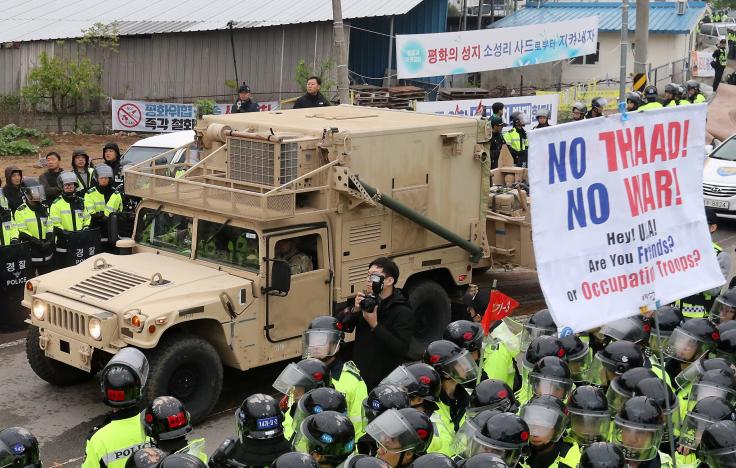
Protested seen protesting the arrival of a U.S. military vehicle which is part of THAAD system in Seongju, South Korea, April 26, 2017. Credit: Kim Jun-beom/Yonhap via REUTERS
More than 10 protesters were injured some of them with fractures in clashes with Police, Kim Jong-kyung, a leader of villagers opposing the deployment told Reuters.
Kim said about 200 protesters rallied overnight and they would keep up their opposition.
“There’s still time for THAAD to be actually up and running so we will fight until equipment is withdrawn from the site and ask South Korea’s new government to reconsider,” he told Reuters.
A police official in the nearby town of Seongju said police had withdrawn from the area and were not aware of any injuries.
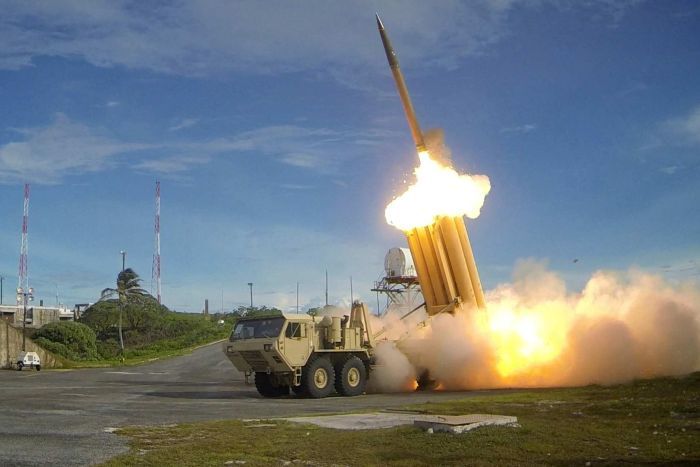
The U.S. has deployed the THAAD system to South Korea amid growing tensions over North Korea. Credit: Reuters
Washington and Pyongyang have stepped up warnings to each other in recent weeks over North Korea’s development of nuclear weapons and missiles in defiance of U.N. resolutions and concerns that Pyongyang may soon conduct a sixth nuclear bomb test.
North Korea’s nuclear and missile threat is perhaps the most serious security challenge confronting U.S. President Donald Trump. He has vowed to prevent North Korea from being able to hit the United States with a nuclear missile.
North Korea has vowed to strike the United States and its Asian allies at the first sign of any attack.
The United States is sending the USS Carl Vinson aircraft carrier group to waters off the Korean peninsula, where it will join the USS Michigan, a nuclear submarine that docked in South Korea on Tuesday. South Korea’s navy has said it will hold drills with the U.S. strike group.
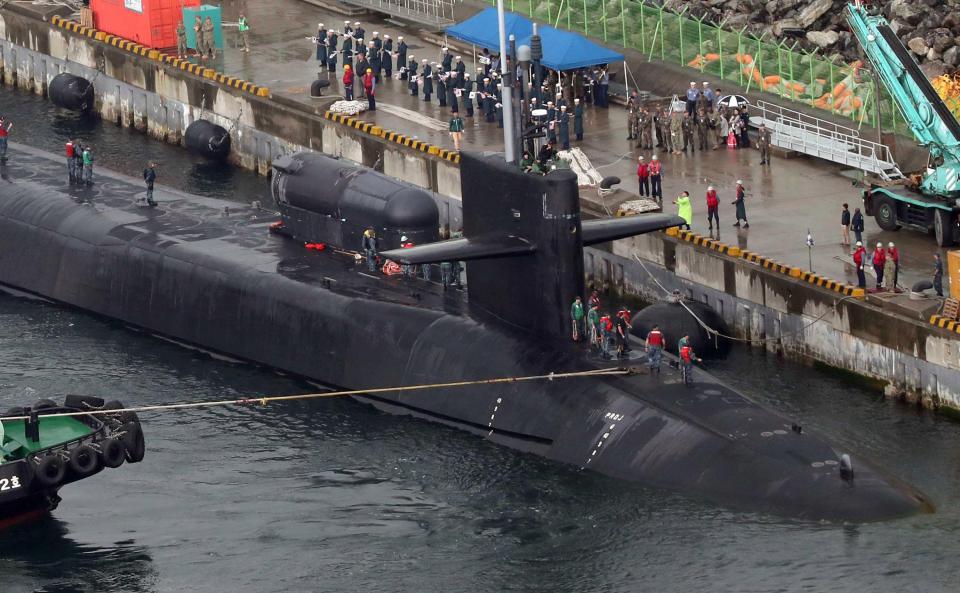
US Navy submarine USS Michigan arrived in port of Busan, South Korea on Tuesday, the same day North Korea marked its 85th military anniversary and the day China launched its new homemade aircraft carrier. Credit: Getty Images
Admiral Harris said the carrier was in the Philippine Sea, within two-hours striking distance of North Korea “if called upon to do that”.
Washington has said all options are on the table in dealing with North Korea including military ones. Officials, however, have stressed that the current focus is on stepped-up sanctions which are expected to be discussed at a U.N. Security Council meeting on Friday, chaired by U.S. Secretary of State Rex Tillerson.
Chinese support for new sanctions is vital given that it is North Korea’s biggest trading partner.
North Korea’s foreign ministry denounced the planned meeting, saying the United States was “not morally entitled” to force member states to impose sanctions. It called the United States’ attempt to make North Korea give up its nuclear weapons through military threats and sanctions “a wild dream” and like “sweeping the sea with a broom”.
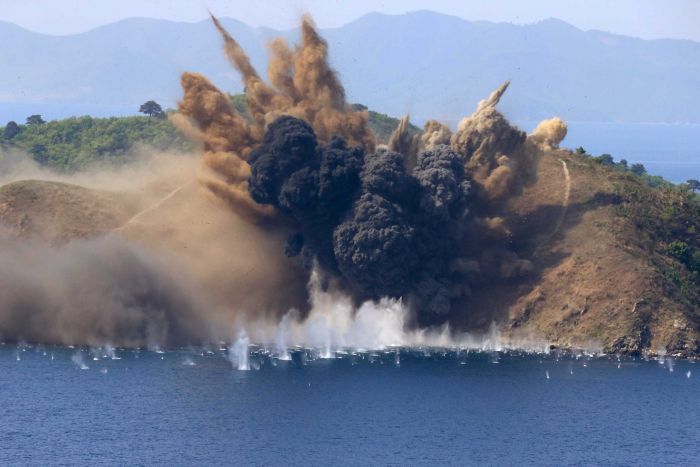
The THAAD system is designed to intercept and shoot down any short, medium to intermediate-range ballistic missiles like the ones North Korea has been launching. Credit: REUTERS/KCNA
Chinese Foreign Minister Wang Yi on Wednesday urged all sides to ease tensions between North and South Korea and work towards a peaceful solution in the region through negotiations.
“Security and stability is quite fragile and there is a great danger that a new conflict, or incidents could happen at any time,” he said.
U.S. officials say Washington sees no value in returning to international talks on North Korea until Pyongyang shows it is serious about denuclearization.
Copyright © 2017 Manyika Review. All Rights Reserved.

